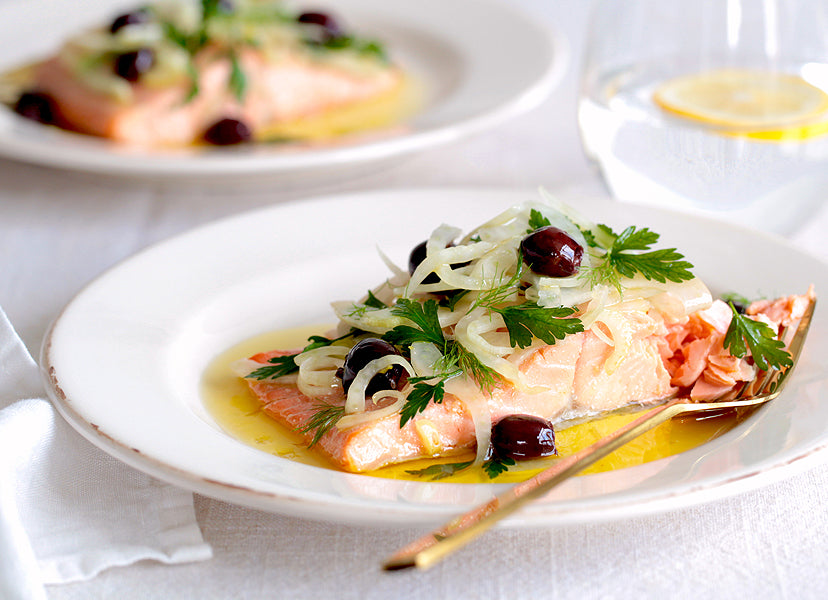May 21, 2015

One of the best cheeses to eat and use in the kitchen, Parmigiano-Reggiano is high in essential fatty acids – which promote an increase in lean body mass, fat loss, resting energy expenditure. It also acts as a cancer preventative and is recommended as being suitable for the diet of babies, athletes and the elderly. Parmigiano-Reggiano is produced only in the areas of Parma, Reggio Emilia, Modena, Mantua and Bologna.
All Parmigiano Reggiano, (although DOP), is not the same – any more than the pasta in our range is just pasta, balsamic vinegar is just balsamic vinegar or our risotto rice just risotto rice.
We first met the Montanari family about 12 years ago, when our eyes caught a handmade cardboard sign with the words 'Vacche Rosse' at a trade show. This is Italian for 'Red Cows', an ancient breed. We had just read about how small the production of this original version of Parmigiano Reggiano was, due to virtually all this breed of cows having been wiped out during World War Two. After the war, Holstein and Friesian cows had become the norm as the industry rebuilt itself. Some farms also became a lot more industrialised during this time. Literally a handful of the red cows had survived, and there was a move to rebuild herds. These days their numbers have increased to around 3,100 cows.


Margherita Montanari was about 19 when we first met her, and had a very busy schedule. This appeared to include playing a lot of tennis and singing with a band – and helping in the family company part-time. Margherita’s personality was like a high energy fountain of bubbly spring water and her more serious father was trying to steer her towards a different style of work ethic. One that involved her working for more than the few hours she was currently making herself available to help him, and her wine connoisseur brother, Gabriele. Because Margherita spoke the most English she was the one we visited a farm and dairy with, where we noted that all details pertaining to the comfort of the cows had been anticipated including an automatic round brush they could sidle their hinds quarters up to for a bit of a scratch, so they seemed pretty content.

We have distributed the Montanari family’s selection of Parmigiano-Reggiano and Grana Padano around New Zealand ever since. Because they have generously sent us superb quality Parmigiano of at least the age we have paid for, this has enabled us to charge less for better quality cheese than the more industrial brands also available here. The whole wheels of cheese we cut ourselves are made on a particular and quite unique farm, located in a park in Reggio-Emilia. This privately owned park comprises 250 hectares, half of which is wooded, with a natural lake providing all the water to the farm. They grow 80% of their feed, so it is a closed circuit of production, with high quality standards. The philosophy of the owner is to make the whole production even more ‘green’ than it is now over time, with plans for grassed rooftops on the barns. The park itself has a romantic history as it was at one time was gifted by Napoleon to his wife, Maria-Luigia. Reputedly she enjoyed summers there with her lovers. With such a beautiful Arcadian setting, no wonder the cheese tastes so good.

Making Parmigiano-Reggiano requires physical strength, as dictated by the weight of the balls of cheese. It takes 600 litres of milk to make one wheel. As you will see from the pictures, the balls are formed, drained, halved, drained again – in this case by Jass, Emilio (the head Casaro) and Ciro. They are put into the plastic moulds initially, marked with the number of the farm and a QR code, turned about three times, then are left to drain further. They are transferred to metal frames for around three days, then into salt baths for between 20-25 days before the long process of ageing begins. Every wheel is checked and turned regularly and the quality is assessed and nurtured. Emilio is also responsible for this side. But wait there's more...Solo di Bruna.





This Brown Cow Parmigiano comes from an alpine breed of pretty brown cows whose milk, until a few years ago, was mixed in with the Friesian/Holstein blend. This is now making an appearance on its own, and the Montanari family tell us that this cheese is extremely well regarded and delicious. Naturally, we can hardly wait to share this with you and have some wheels on their way to try...


